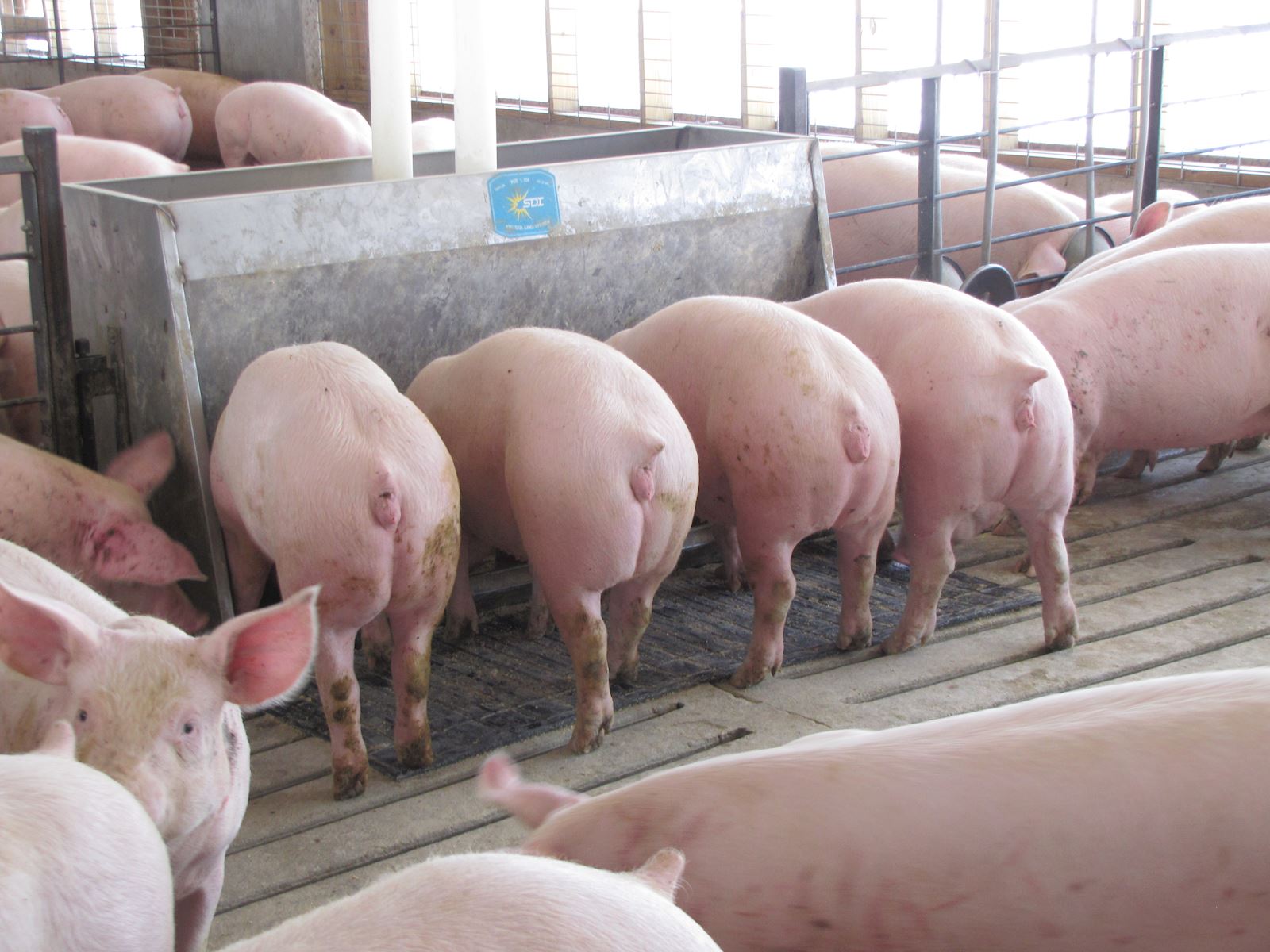
posted on Tuesday, June 22, 2021 in AMVC Veterinarians in the News
A sow farm, like a building, will crumble if the foundation isn’t functional, said Joel Sparks, DVM, with AMVC Management Services. Replacement gilts are the foundation that determine whether a sow farm will remain sustainable and profitable, he said.
For replacement gilts to be successful, the farm needs a well-established, well-managed and continually maintained plan, Sparks said. The ultimate goal is to have well-prepared, breed-eligible gilts to bring into the sow herd at the right time.
Have a plan
“When starting or making major modifications to a sow farm, a plan for replacement gilts is necessary,” Sparks said. “Components like the genetic line, source, target number, acclimation and inclusion into the sow herd need to be considered.”
In terms of outcome, decision-makers should identify their goals for the farm. Common goals include throughput, wean-to-finish growth, meat characteristics, genetic propagation and cost, Sparks said. Some farms work off one model more than another, but it’s important for each farm to know what it wants to achieve.
“Decisions are usually based on a combination of goals,” he added. “Availability, economics and contractual agreements will influence your decision-making.”
Maximize health
Starting with a healthy female is imperative, Sparks said.
“From a herd health standpoint, it’s a great advantage if replacement gilts can come from one source farm or flow,” he said. “This makes the process of gilt acclimation and health stabilization much smoother.”
Sparks services herds primarily in the Midwest, where certain vaccinations are important for successful gilt acclimation.
“Gilts must be vaccinated for porcine circovirus type 2, porcine parvovirus and erysipelas,” he said. “Depending on sow-herd health and flow of weaned pigs out of the farm, other vaccinations against agents may include porcine reproductive and respiratory syndrome (PRRS) virus, Mycoplasma hyopneumoniae (M. hyo), influenza A virus, Streptococcus suis and Glaesserella parasuis.”
Other options to acclimate replacement gilts may include specifically timed, controlled exposure to field agents, Sparks said. He noted this approach has been done with PRRS virus, M. hyo, porcine epidemic diarrhea virus and rotavirus.
“Controlled exposure needs careful oversight to make sure unintentional pathogens are not introduced or propagated, and make sure controlled exposure and vaccination procedures are completed before gilts physically enter the sow herd,” Sparks said. “Gilt entry should not pose a risk of pathogen introduction.”
Gilt development and management
The environment of the barn should be considered in terms of air (gas, humidity, temperature); water (flow and quality); and feed (fresh and in the correct amount), Sparks recommended. When these basics are correct, replacement gilts have the opportunity to thrive.
Husbandry is a critical component of gilt management, Sparks said.
“It’s a matter of observing every animal every day,” he said. “If caregivers are doing that, they can identify and treat poor-doing animals quickly.
“Is husbandry a lost art?” he added. “It’s certainly one that needs more training. It’s not an ‘aha’ thing by any means, but it might be more difficult than it used to be. Husbandry requires more training because fewer employees have a background in agriculture. This is extremely foundational in all settings.”
Be vigilant
Ensuring good management of the replacement-gilt pool requires vigilance and attention.
“The plan cannot be laissez-faire,” Sparks said. “Oversight must be maintained in health, husbandry, acclimation and transition to breeding. The end goal is to have an exceptional breed-eligible female.”
Tags
- amvc veterinarian
- swine